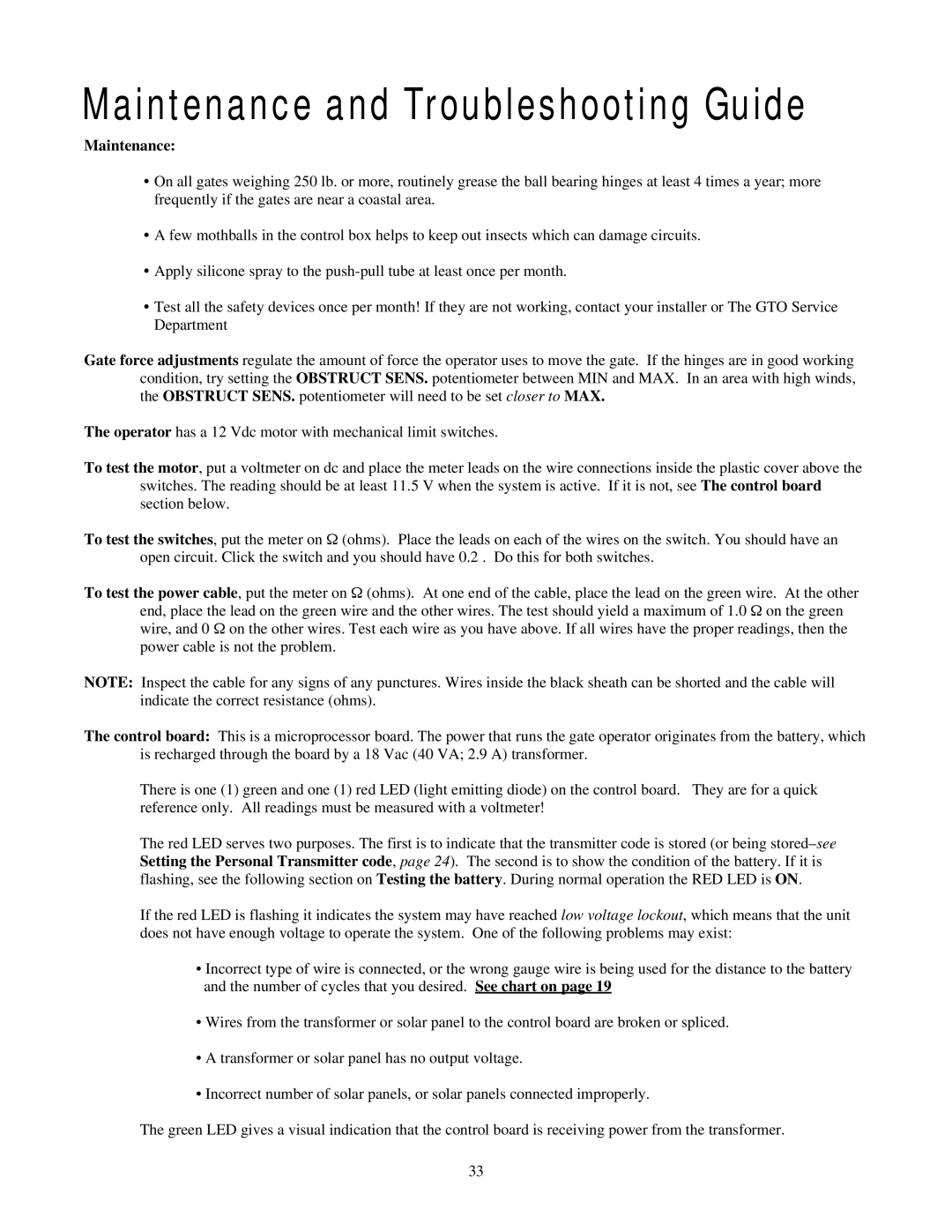Maintenance and Troubleshooting Guide
Maintenance:
•On all gates weighing 250 lb. or more, routinely grease the ball bearing hinges at least 4 times a year; more frequently if the gates are near a coastal area.
•A few mothballs in the control box helps to keep out insects which can damage circuits.
•Apply silicone spray to the
•Test all the safety devices once per month! If they are not working, contact your installer or The GTO Service Department
Gate force adjustments regulate the amount of force the operator uses to move the gate. If the hinges are in good working condition, try setting the OBSTRUCT SENS. potentiometer between MIN and MAX. In an area with high winds, the OBSTRUCT SENS. potentiometer will need to be set closer to MAX.
The operator has a 12 Vdc motor with mechanical limit switches.
To test the motor, put a voltmeter on dc and place the meter leads on the wire connections inside the plastic cover above the switches. The reading should be at least 11.5 V when the system is active. If it is not, see The control board section below.
To test the switches, put the meter on Ω (ohms). Place the leads on each of the wires on the switch. You should have an open circuit. Click the switch and you should have 0.2 . Do this for both switches.
To test the power cable, put the meter on Ω (ohms). At one end of the cable, place the lead on the green wire. At the other end, place the lead on the green wire and the other wires. The test should yield a maximum of 1.0 Ω on the green wire, and 0 Ω on the other wires. Test each wire as you have above. If all wires have the proper readings, then the power cable is not the problem.
NOTE: Inspect the cable for any signs of any punctures. Wires inside the black sheath can be shorted and the cable will indicate the correct resistance (ohms).
The control board: This is a microprocessor board. The power that runs the gate operator originates from the battery, which is recharged through the board by a 18 Vac (40 VA; 2.9 A) transformer.
There is one (1) green and one (1) red LED (light emitting diode) on the control board. They are for a quick reference only. All readings must be measured with a voltmeter!
The red LED serves two purposes. The first is to indicate that the transmitter code is stored (or being
If the red LED is flashing it indicates the system may have reached low voltage lockout, which means that the unit does not have enough voltage to operate the system. One of the following problems may exist:
•Incorrect type of wire is connected, or the wrong gauge wire is being used for the distance to the battery and the number of cycles that you desired. See chart on page 19
•Wires from the transformer or solar panel to the control board are broken or spliced.
•A transformer or solar panel has no output voltage.
•Incorrect number of solar panels, or solar panels connected improperly.
The green LED gives a visual indication that the control board is receiving power from the transformer.
33
